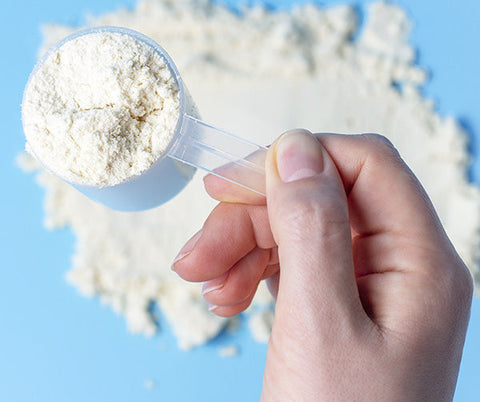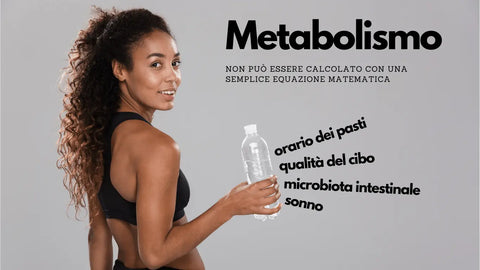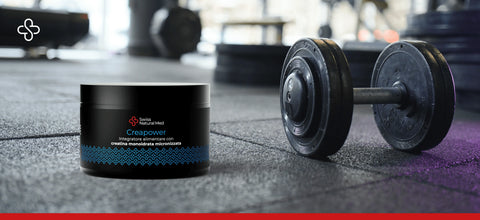Protein: From Old Dogmas to Precision Nutrition
Current knowledge in the field of nutrition has allowed us to shift our attention from the old, overly generalized beliefs regarding the importance of consuming a minimum quantity of proteins, to that of consuming a particular type of proteins, defined as "qualitative" due to their higher content of some essential amino acids .
In fact, it is to the essential amino acids that we give importance, rather than to the proteins themselves, which also include the non-essential amino acids.
Protein Powder
Protein powders are a convenient and versatile option for adding protein to your daily diet.
Protein powders allow people to add exactly the amount of protein they want to their diet without having to worry about adding cholesterol, saturated fat, or contaminants associated with the production processes of meat, cheese, or other animal protein sources.
Additionally, protein powders offer a wide range of options, including whey protein, plant-based proteins such as pea, hemp, or rice, to suit your dietary needs and personal preferences.
This convenience and flexibility make them a popular choice for athletes, active people, and individuals looking to increase their protein intake without adding unwanted components to their diet.
Milk Protein vs Whey Protein: Be Careful Not to Confuse Them
Milk proteins and whey proteins are both extracted from milk, but have different characteristics and compositions.
- Milk Proteins : Milk proteins are a combination of whey proteins (whey) and casein proteins (80% of the total). We would like to point out that some studies have highlighted a growing interest in the correlations between casein, in particular the A1 casein family, and various pathological conditions, including food intolerances, gastrointestinal disorders and autoimmune diseases.
- Whey Protein : Whey protein is extracted during the cheese making process, when milk is coagulated and separated into two components: whey and curd. The whey is then filtered and purified to obtain whey protein. These proteins have a high biological value and contain a high amount of essential amino acids, which are important for muscle protein synthesis and tissue repair.
Read also 👉 Amino acids and proteins: definitions, differences and best qualities
Whey Protein
Whey protein is currently considered the best protein source in terms of anabolic capacity, i.e. the ability to promote the growth of muscle mass and regenerate tissues that require daily replacement.
This advantage of whey protein is attributable to its high content of essential amino acids (EAA) , higher than that of any other food.
It is important to remember that there are different types of Whey protein, which are distinguished by a different type of quality and price, in this article we will try to understand how to distinguish the best Whey Protein.
Muscle Anabolism
Muscle anabolism, often associated exclusively with bodybuilders in the popular imagination, plays a crucial role in overall health.
It has been proven that proper muscle anabolism not only contributes to the growth and maintenance of muscle mass, but also significantly reduces the risk of developing major diseases.
Muscle mass and health
Research has shown an inverse relationship between muscle mass and many diseases, highlighting the importance of promoting healthy muscle anabolism to improve health and prevent disease.
In this context, regular physical activity that includes weight-bearing exercises, such as the use of isotonic equipment and calisthenics training, plays a fundamental role, together with a correct lifestyle and the use of foods and supplements that have a particular anabolic effect.
How to recognize the best whey proteins?
It’s finally here, putting an end to the confusion: here’s the definitive guide to whey protein.
It is important to know that whey protein is the most popular supplement among athletes who aim to recover quickly or increase muscle mass , but there are numerous varieties and types. The main categories are three:
Whey Protein Concentrate (WPC)
In these whey proteins, the amount of protein in the concentrate can vary between 22% and 90% . Usually, the protein content of the whey concentrate is indicated on the packaging.
In any case, this category of whey is usually composed of about 80% protein, while the rest of the product contains lactose (4-8%), fat, minerals and moisture.
- Protein content 70-80%
- Good digestibility
- Lower price than WPI proteins
Whey Protein Hydrolysate (WPH)
Whey protein hydrolysate is pre-digested, meaning it has been through a process that breaks down the protein into smaller peptides using heat, acids, or added enzymes. This makes it easier for the body to absorb and digest.
With a protein content of 80-90% , it is used in clinical, sports and infant nutrition products thanks to its hypoallergenic properties.
- Protein content 80-90%
- Excellent digestibility
- Price higher than WPC
Whey Protein Isolate (WPI)
These proteins are also called Whey protein isolate, the purest form of whey protein available, containing between 90 and 95% protein . It is a great option for lactose intolerant people, as its content is practically zero (<1%).
The low fat content and high protein value make these whey proteins the purest on the market .
This is also reflected in their price, which tends to be higher.
Since they have a higher bioavailability , you need to take a smaller amount to get the same effect. Therefore, in our opinion, it makes no sense to speculate on the price in this case.
- Protein content >92%
- Excellent digestibility
- Price higher than WPC
Whey Protein Isolate Enriched with EAA+ and Polyphenols (WPI+)
The most innovative whey protein isolate of the moment is certainly (WPI+) like NEW WHEY 100% which is derived from the milk of cows fed exclusively on grass, guaranteeing a certified and high-quality supply chain.
This innovative formula includes a higher intake of essential amino acids (EAA) from plant fermentation and natural polyphenols, elements that help enhance the anabolic effect of protein supplementation.
What distinguishes this Whey protein from others is its higher EAA content and its powerful antioxidant effect, which promotes muscle recovery and cellular protection.
Furthermore, thanks to its composition, this protein also acts as an effective natural prebiotic, further improving absorption.
Here's a direct comparison of Whey proteins
- WPC
- WPH/WPI
- WPI+

How much protein should you consume per day?
This answer takes into account the total amount of protein you can get from both foods and protein powders.
According to the International Society of Sports Nutrition (ISSN), a leading body dedicated to applied nutrition science and sports supplementation, there are two guidelines for protein intake for healthy, active individuals:
For building and maintaining muscle mass, a total daily protein intake of 1.4 to 2.0 grams of protein per kilogram of body weight per day is recommended.
This amount is usually sufficient for most athletes and active individuals. Protein powder supplements typically come in a scoop that ranges from 10 to 30 grams.
Considering that we get some of our protein from our daily diet, it is usually recommended to use about 30 grams of protein powder per day.
However, to accurately determine the ideal amount, it is important to know your daily calorie consumption, your protein intake from your diet, and the quality of the protein powder you use.
What is the best time to take protein powder?
When exercise is combined with protein intake, both tend to stimulate muscle protein synthesis (MPS) and work synergistically to enhance the effects.
Consuming protein before or after resistance training can amplify this effect, further increasing muscle growth and recovery.
However, according to ISSN guidelines, you can take protein powder whenever you want, even as a replacement for traditional protein sources.
For example:
- Add to oats in the morning, mixed with plant-based milk (such as oat or almond).
- Even eat them at dinner, instead of meat or other food proteins.

When is it best to take whey protein powder?
Having clarified this first, fundamental point, it is natural to ask when it is best to take protein powder.
The answer (purists will be disappointed), according to the ISSN, is that you can take them whenever you want, even as a substitute for classic food proteins .
For example:
- In addition to oats in the morning dissolved in a vegetable milk (oat, almond, etc.)
- Even for dinner instead of meat
Our advice is to plan 4 to 6 protein “doses” per day. But if you want to maximize muscle growth, you could also consume them immediately after an intense workout, since in the following 2 hours there is a greater stimulation of the anabolic phase.
How to choose the best milk proteins
Here is a list of parameters and ingredients to consider before purchasing a milk protein:
- As many essential amino acids as possible, from plant fermentation
- No artificial colourings
- No artificial flavours
- No artificial sweeteners
- Absence of emulsifiers
- Lack of digestive enzymes
- No synthetic chemicals

Based on these characteristics, we have developedNEW WHEY 100% , a protein powder that respects all these parameters and includes the addition of essential amino acids from vegetal fermentation and natural polyphenols to maximize the stimulation of muscle mass. Click here to discover all its characteristics.
Try now NEW WHEY 100%👇 Whey protein and essential amino acids
Buy NowPlant-based protein powder
Many people wonder if there are any plant-based protein powders that can match whey protein.
We are confident that in the future it will be possible to demonstrate the effectiveness of valid formulations of vegetable protein powders, perhaps integrated with essential amino acids from natural fermentation, like the new Whey WPI+ proteins.
However, to date, both conducted studies and field tests have clearly shown that under catabolic conditions, whey protein powders are significantly superior in promoting an anabolic response in muscles compared to plant proteins currently available on the market.
This is due to the ability of these proteins to rapidly deliver their essential amino acids into the bloodstream, creating a more pronounced anabolic spike.
We make no secret of the fact that we have been working diligently with our experts for several years in order to develop a truly effective plant-based protein powder.
We hope to get positive results in the short term, so that we can introduce it to the market as soon as possible.

How to recognize the best whey proteins
We have carefully examined the key elements to look for on the label of the protein powder we intend to purchase, since a high-quality Whey should meet specific characteristics.
We would therefore like to conclude our definitive guide on whey protein by listing the 15 fundamental characteristics for identifying a good quality whey protein :
- Notify the Ministry of Health or align with the ordinances of the country in which they are sold.
- Protein concentration >90%
- Excellent biological value >100
- Protein efficiency PER >3.5
- PDCAAS digestibility >0.98
- The highest number of essential amino acids (EAA) >50%
- Low fat <1%
- Low lactose content <1%
- Low sodium <150mg/100g
- Low glycemic index
- Without any artificial sweeteners
- Without any artificial flavors
- Without any artificial colouring
- Produced with milk from cows raised exclusively on pasture.
- Complete traceability of the supply chain, certified by an external body.
In summary, at this time, unless you are vegan, we strongly recommend that you opt for high-quality whey proteins supplemented with essential amino acids from plant fermentation and natural polyphenols. Your muscles will thank you!
Sources:
- Front Nutr . 2018; 5: 83. doi: 10.3389/fnut.2018.00083
- J Int Soc Sports Nutr . 2017; 2.20pm. doi: 10.1186/s12970-017-0177-8
- PLoS One . 2017; 12(10): e0186204. doi: 10.1371/journal.pone.0186204



